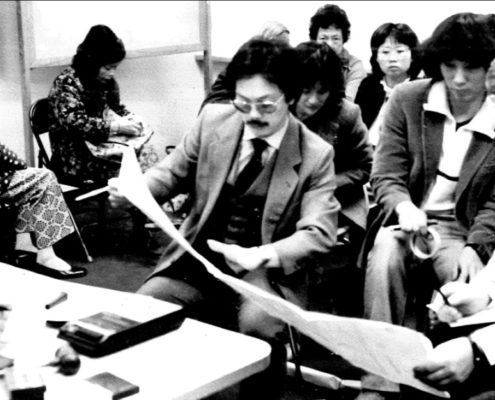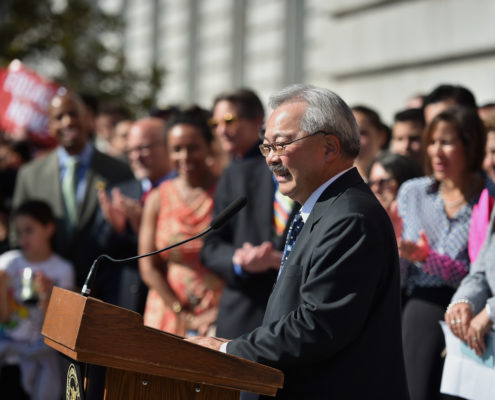 The Lee family is immensely proud of the work that Ed has done throughout his whole career and the lessons about hard work, leadership, community service and humility that he lived every day. We strive to be as transparent as possible about this fund and how we plan to use it to continue his spirit of service.
The Lee family is immensely proud of the work that Ed has done throughout his whole career and the lessons about hard work, leadership, community service and humility that he lived every day. We strive to be as transparent as possible about this fund and how we plan to use it to continue his spirit of service.
What our family cherished more than anything about Ed was his personality. He instantly lifted the mood in any room he was in. If there was tension, he knew how to cut it with a lighthearted joke — and he was notorious for doubling over in laughter over his own jokes, which usually only made sense to himself.
But San Francisco was always on his mind. As much lightness as he brought to people around him, he usually found a way to bring the conversation back to ways to improve the city and solve its problems. He was serious about his work, pragmatic about the choices in front of him, and open-minded about finding new approaches and solutions to the issues he wanted to tackle.
He was not interested in scoring political points or gaining favor with voters to climb to higher office. What he wanted was to make San Francisco thrive — not just for today, but well into the future. He wanted to build a foundation so that the city could blossom economically, have a generous financial pool to provide services, become a leader in sustainability and green technology, and uphold a gold standard of living for all residents.
He cared about the details. Many of his staffers remember how much he enjoyed poring over the text of the city’s electrical contracts or seismic retrofitting plans — details that may not have meant much to the average voter but added to the solid foundation for San Francisco in the future.
Being pragmatic meant he made sure to balance everything — any new initiatives had to have funding to back them up, and new sources of revenue were to go directly to serving the city. Anytime he met with the head of a business or event that wanted to set a foothold in San Francisco, his main question was: What are you going to do for the city? Our family heard these conversations all the time.
Ed cared deeply about San Francisco’s residents, particularly ones that were vulnerable to economic pressures. As mayor he helped pilot the city’s Navigation Centers — emergency homeless shelters reserved for those who have tended to stay away from the traditional shelter model. Unlike traditional shelters, Navigation Centers allowed homeless people to bring pets, partners and possessions, and case workers would work to connect them to services — and he was very proud of how they were helping the city’s homeless. Since these centers made their debut in 2015, they’ve become a model for cities around the country.

(Photo: Josh Edelson/Bloomberg via Getty Images)
He was also intensely focused on housing. As the city recovered from the economic recession, housing prices skyrocketed and pushed longtime residents out the city. It’s a problem that every other major city around the country is currently facing, and in San Francisco it’s been exacerbated by geography and decades of policies that have made it difficult to add housing stock.
As mayor, Ed created the largest affordable housing fund in San Francisco history, completely transforming of all of San Francisco’s 3,500 units of public housing, and spurring housing development in all neighborhoods. He also committed to building 5,000 new units of housing per year, a figure more than double the annual amount his predecessors had pledged over the previous fifty years. By the time he passed away, thousands of those new units were under construction and set to finish in a few years’ time.
There are a few things we know he was committed to doing in his second term that he didn’t get a chance to see through. They include:
- pushing forward the success of navigation centers and providing support for the homeless
- ensuring that San Francisco builds its housing stock and commits to 10,000 new units by the year 2020
- making San Francisco a world leader in sustainability and green technology
- protecting the rights of immigrants and ensuring that San Francisco’s sanctuary policies remained intact
